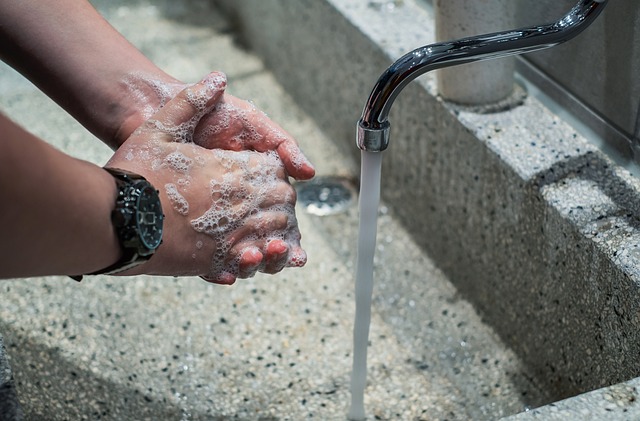Introduction:
The art of soap-making, once overshadowed by mass-produced commercial products, is experiencing a remarkable revival in recent years. Artisanal soap-makers are rediscovering traditional methods that involve the use of caustic soda, a key ingredient that transforms oils and fats into luxurious bars of soap. This article delves into the fascinating world of artisanal soap-making, exploring the historical roots of this craft, the role of caustic soda in the process, the unique benefits of handmade soaps, and the safety precautions necessary when working with this powerful ingredient. Furthermore, we provide a step-by-step guide to help you embark on your own soap-making journey, and encourage you to unleash your creativity by customizing recipes to create truly one-of-a-kind bars of soap. Join us as we celebrate the artistry and craftsmanship of traditional soap-making methods that have captured the hearts of soap enthusiasts worldwide.
1. The resurgence of artisanal soap-making
1-1 The growing interest in handmade soap
In a world saturated with mass-produced products, there has been a refreshing surge of interest in the art of handmade soap-making. Consumers are becoming increasingly conscious of the ingredients in their skincare products and are seeking more natural and sustainable alternatives. This has paved the way for the revival of artisanal soap-making, where traditional methods and natural ingredients take center stage.
1-2 The market demand for unique and natural products
The market demand for unique and natural products has played a significant role in the resurgence of artisanal soap-making. People are no longer satisfied with generic soaps that lack character and individuality. They want products that align with their values and cater to their specific needs. Handmade soaps offer a diverse range of scents, textures, and ingredients, allowing consumers to find the perfect soap that suits their preferences.

2. Traditional soap-making techniques: A historical overview
2-1 Ancient soap-making practices
Soap-making has a rich history that dates back thousands of years. Ancient civilizations, such as the Babylonians and Egyptians, used a combination of animal fats and ashes to create soap-like substances. These early soap-makers discovered that mixing fats with alkali substances created a cleansing product that revolutionized personal hygiene.
2-2 Evolution of soap-making methods
Over the centuries, soap-making techniques evolved, with different cultures adding their own twists. In the Middle Ages, Europe saw the rise of traditional soap-making guilds, where soap was made using fat from animals like sheep and cows. As time went on, new ingredients and processes were introduced, leading to the soap-making methods we use today.
3. Understanding caustic soda: Its role in soap-making
3-1 What is caustic soda?
Caustic soda, also known as sodium hydroxide, is a key ingredient in the soap-making process. It is a powerful alkali substance that reacts with fats or oils, converting them into soap through a process called saponification. Caustic soda is essential as it helps to break down the fats and oils, creating a chemical reaction that results in the formation of soap.
3-2 Chemical reactions in soap-making
When caustic soda is mixed with fats or oils, a chemical reaction occurs. The caustic soda breaks down the fats’ triglyceride structure into fatty acids. These fatty acids then combine with the sodium hydroxide to form soap and glycerin. This process, known as saponification, is the fundamental principle behind soap-making and allows for the creation of a wide variety of beautiful and beneficial artisanal soaps.
4. The benefits of artisanal soap: Quality and uniqueness
4-1 Superior quality of handmade soaps
One of the standout advantages of artisanal soap is its superior quality. When soap is made by hand, artisans have complete control over the ingredients, ensuring that only the finest and most natural components are used. This attention to detail results in a soap that is gentle on the skin, provides excellent cleansing, and leaves behind a luxurious and moisturizing feel.
4-2 Unique characteristics and customizability
Artisanal soaps offer a level of uniqueness and customizability that mass-produced alternatives simply cannot match. Crafters can experiment with different combinations of oils, scents, colors, and textures, resulting in a diverse range of soaps that cater to different preferences and needs. Whether you’re looking for a soothing lavender-scented soap or an exfoliating coffee scrub, there is an artisanal soap out there that will tickle your fancy.
So, if you’re tired of generic soaps that lack personality and want a bathing experience that is both indulgent and natural, consider exploring the world of artisanal soap-making. It’s a delightful journey that combines ancient techniques with modern creativity, all while keeping your skin clean, pampered, and happy.

5. Safety precautions when working with caustic soda
You’ve heard the saying “safety first,” right? Well, when it comes to working with caustic soda, it should be your mantra. This powerful chemical can cause some serious damage if not handled correctly. Here are a few safety precautions to keep in mind:
5-1 Importance of protective gear
When dealing with caustic soda, it’s essential to suit up like a soap-making superhero. Don your protective gear, which should include gloves, goggles, and an apron. Trust me, you don’t want any unexpected caustic encounters with your skin or eyes. Safety goggles might even make you look like a mad scientist, but hey, it’s all part of the soap-making charm!
5-2 Handling and storage guidelines
Caustic soda may be a key ingredient in artisanal soap-making, but it’s not something you want to treat lightly. Store it in a cool, dry place, far away from curious children, pets, and nosy neighbors. And when you’re actually using it, be sure to add the caustic soda to the water, not the other way around. Trust me, you don’t want to create a mini volcano in your soap-making adventures.
6. Step-by-step guide to artisanal soap-making using caustic soda
Ready to dive into the magical world of soap-making? Here’s a simple step-by-step guide for crafting your very own artisanal soaps using caustic soda:
6-1 Gathering ingredients and equipment
First things first, gather all your soap-making supplies. You’ll need oils, water, caustic soda (remember, add it to the water, not vice versa), a heat-resistant container, a stick blender, molds, and any fragrances or colors you want to add. It’s like gathering your crew for a soap-making adventure!
6-2 Measuring and combining oils and caustic soda
Now comes the fun part – measuring and combining your oils and caustic soda. By carefully following a recipe (or letting your creative juices flow), you’ll create the perfect concoction of oils and caustic soda, which are the building blocks of your soap. It’s like mixing ingredients for a secret potion!
6-3 The saponification process
Once your oils and caustic soda are well mixed, it’s time for the saponification dance. This is when the magic happens and your soap starts to take shape. The mixture will transform into a thick, pudding-like consistency, and you’ll know you’re on the right track. It’s like witnessing a scientific experiment unfolding before your eyes!
6-4 Adding fragrances, colors, and other additives
Now it’s time to unleash your creativity. Add your favorite fragrances, colors, and any other additives you fancy – exfoliating coffee grounds, lavender petals, or even a pinch of glitter for that extra pizzazz. This is where your soap becomes unique, reflecting your personality and style. So go wild and embrace your inner soap artist!
7. Exploring creative possibilities: Customizing artisanal soap recipes
Soap-making is not just a science; it’s an art form. So why stick to the same old recipes when you can explore endless creative possibilities? Here are a couple of ways to customize your artisanal soap recipes:
7-1 Using different oils and fats
Don’t just limit yourself to one type of oil or fat. Experiment with different combinations – olive oil, coconut oil, shea butter, or even bacon fat if you’re feeling adventurous! Each oil adds its unique characteristics to the soap, resulting in a sensory experience like no other. Who knew soap could be so versatile?
7-2 Incorporating natural herbs, botanicals, and essential oils
Mother Nature has bestowed upon us a treasure trove of natural wonders. Why not harness their powers by adding herbs, botanicals, and essential oils to your soap? From soothing lavender to invigorating peppermint, the possibilities are endless. You’ll create not just a bar of soap but a little slice of nature in your bathroom. How refreshing!
8. Conclusion: Embracing the artistry of traditional soap-making
In this modern age of mass-produced everything, there is something truly special about embracing the artistry of traditional soap-making. By rediscovering traditional methods involving caustic soda, you’re not just crafting soap; you’re creating a piece of yourself. So go forth, lather up, and let the artisanal soap-making revival come alive in your hands. It’s time to unleash your inner soap-master!In conclusion, the revival of artisanal soap-making and the rediscovery of traditional methods involving caustic soda have brought forth a renaissance of creativity and craftsmanship in the soap-making industry. By embracing these time-honored techniques, we not only produce high-quality, unique soaps but also connect with the rich history and artistry of this age-old practice. So, whether you’re a seasoned soap-maker or a curious beginner, we encourage you to embark on this journey of self-expression and exploration. Embrace the beauty of artisanal soap-making, and let your imagination and passion guide you to create exceptional soaps that nourish both the body and the soul.
FAQ
1. Is it safe to work with caustic soda when making soap?
Yes, it is safe to work with caustic soda when making soap as long as proper safety precautions are followed. It is important to wear protective gear, such as gloves and goggles, when handling caustic soda. Additionally, it should be mixed with water in a well-ventilated area to avoid inhaling any fumes. Careful adherence to safety guidelines and responsible handling will ensure a safe soap-making process.
2. Can I customize the soap recipes to suit my preferences?
Absolutely! One of the joys of artisanal soap-making is the ability to customize soap recipes according to personal preferences. You can experiment with different oils and fats, add fragrances, colors, and other additives, or even incorporate natural herbs, botanicals, and essential oils to create your own unique blends. The possibilities for customization are virtually endless, allowing you to craft soaps that are tailor-made for your individual needs and preferences.
3. How long does it take for handmade soap to cure?
Curing is an essential step in the soap-making process that allows the soap to fully harden and mellow over time, creating a longer-lasting and more luxurious bar. The duration of the curing process can vary depending on the recipe and desired outcome, but typically, handmade soaps are cured for around 4 to 6 weeks. During this period, the soap should be stored in a cool, dry place to allow the excess moisture to evaporate and the soap to become harder and milder.
4. Can artisanal soaps be used by individuals with sensitive skin?
Yes, artisanal soaps can be a great option for individuals with sensitive skin. Unlike many commercial soaps that contain harsh chemicals and additives, handmade soaps often use natural and gentle ingredients that are soothing and nourishing to the skin. However, everyone’s skin is unique, so it’s always a good idea to test a small patch of skin before using a new soap. Additionally, if you have specific allergies or sensitivities, it’s advisable to consult with a dermatologist or soap-maker who can guide you towards suitable ingredients and recipes.









